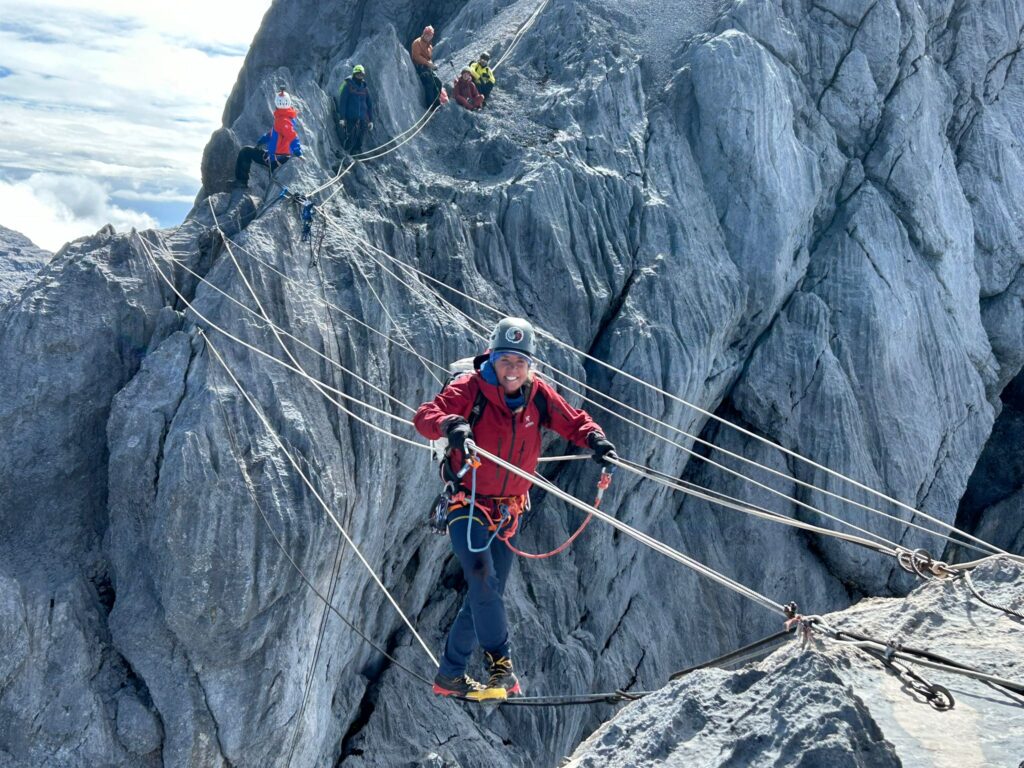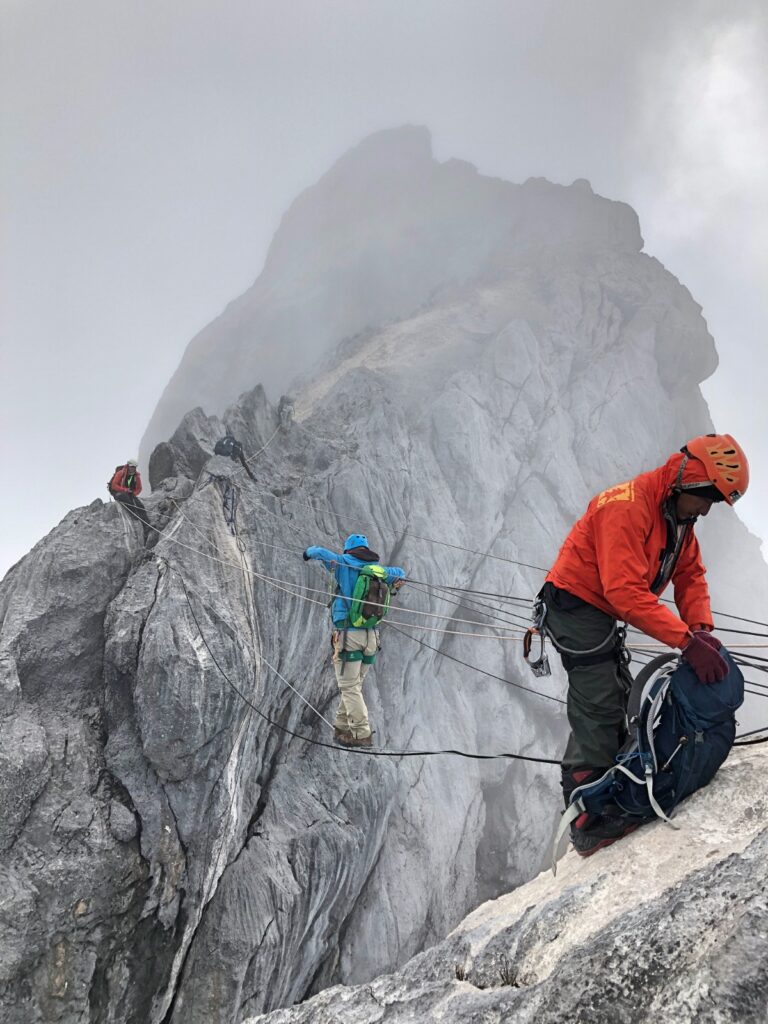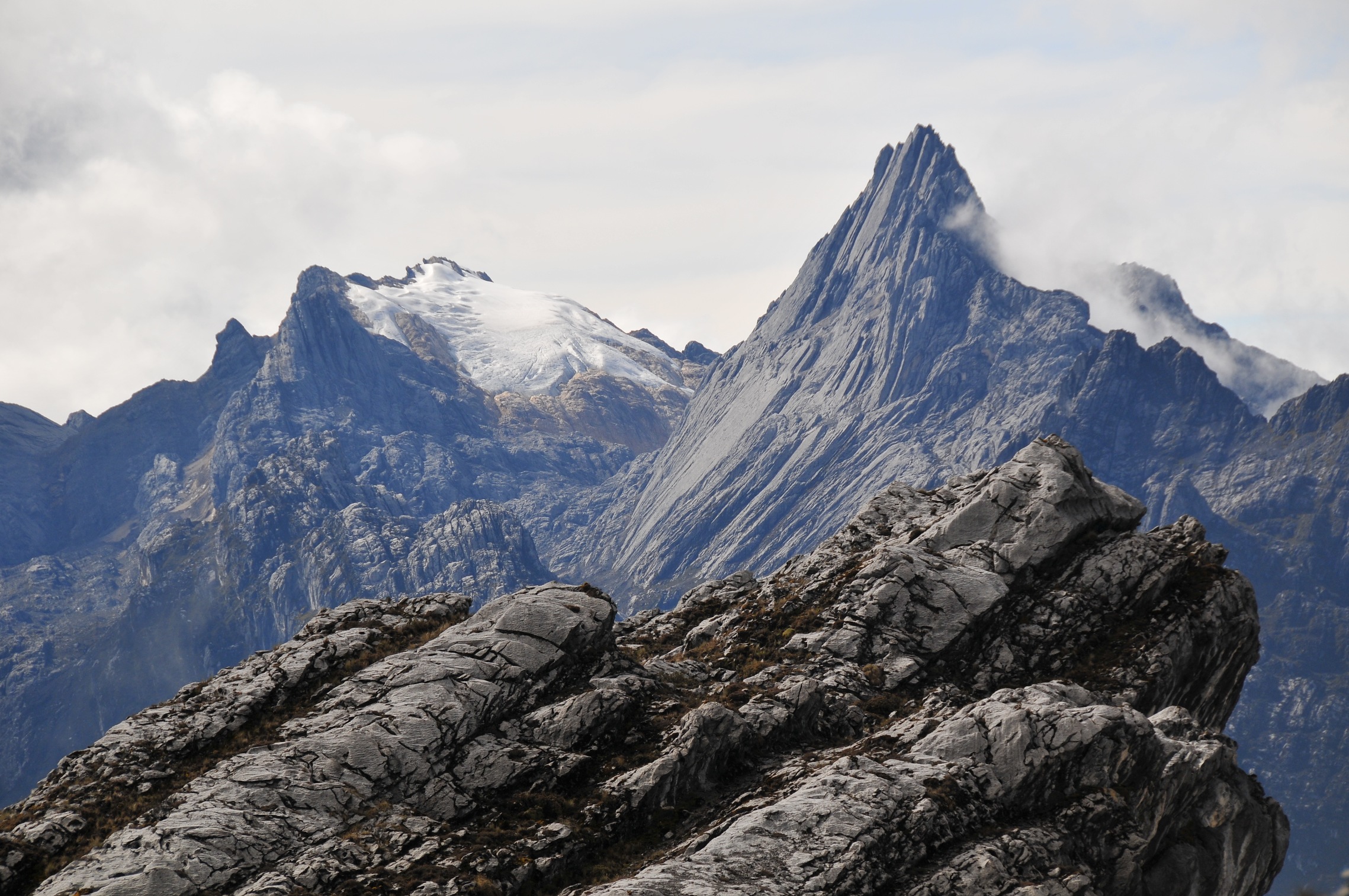For adventurers who love extreme challenges and high-altitude climbs, Puncak Jaya—better known as Carstensz Pyramid—is a dream destination that should be on your bucket list. As the highest peak in Indonesia, it offers not just height, but also tough terrain, breathtaking views of Papua’s wild nature, and the pride of being part of the Seven Summits of the world.
What is Puncak Jaya?
Puncak Jaya, or Carstensz Pyramid, is located in the Sudirman Range in Papua, Indonesia. According to the Seven Summits version, this mountain rises to about 4,884 meters (16,024 feet) above sea level, making it the highest mountain in Indonesia, Oceania, and even the Australian continent.
What makes Puncak Jaya special is how different it is from other mountains in Indonesia. While many Indonesian peaks are volcanoes like Mount Rinjani or Mount Kerinci, Puncak Jaya is made of steep limestone cliffs, resembling a vertical wall stretching into the sky. It’s a paradise for climbers and rock climbing enthusiasts.
History of the Name and Discovery
The name “Carstensz Pyramid” comes from Dutch explorer Jan Carstenszoon, who in 1623 reported seeing a snow-covered mountain from his ship. At the time, people didn’t believe him—how could there be snow in the tropics?
Centuries later, it was confirmed that Puncak Jaya does have permanent snow at its summit, although it’s quickly melting due to global warming.
After Indonesia’s independence, the peak was named “Puncak Soekarno” to honor the country’s first president. However, it’s still widely known as Carstensz Pyramid in the international climbing world.
The Challenge of Climbing Puncak Jaya

Crossing the iconic rope bridge en route to the summit of Carstensz Pyramid in Papua – the ultimate climbing challenge in Indonesia and Oceania.
If you think climbing Puncak Jaya is like hiking other Indonesian mountains, think again. This is a technical climb that requires serious rock climbing skills. Many mountaineers even say that it’s the hardest of the Seven Summits!
Here are some challenges you might face:
- Difficult Access: To reach the basecamp, you need to go through Papua’s rainforests, muddy terrain, rivers, and remote villages. A helicopter is an option, but it can cost thousands of dollars.
- Extreme Weather: Even though it’s near the equator, the summit can drop below zero degrees Celsius. Fog and storms can happen anytime.
- Technical Climbing: Unlike regular hikes, this mountain requires ropes, harnesses, carabiners, and other climbing gear.
- Complicated Permits and Logistics: Puncak Jaya is located in a restricted mining zone (Freeport area), so climbers need special permits that can take time and money to arrange.
Climbing Routes to Puncak Jaya
There are two main routes to reach the summit:
Overland Trekking Route
This starts from towns like Sugapa or Ilaga. You’ll hike for 5–7 days through forests and mountains to reach Yellow Valley Basecamp.
This route is a real adventure and demands high endurance and stamina. It’s perfect if you want the feel of a “true expedition.”
Helicopter Route
This is the fastest way andis usually chosen by international climbers. You can charter a helicopter from Timika or Nabire to the base camp and begin the climb from there. However, this option is expensive and can cost USD 10,000 or more.
Best Time to Climb
The best time to climb Puncak Jaya is from May to October, when the weather is drier and more stable. Outside these months, heavy rains and storms can make the climb more dangerous.
What Awaits at the Top
After all the hard work, everything pays off once you reach the summit. From the top of Carstensz Pyramid, you’ll see:
- A vast, clear blue sky
- The untouched natural beauty of Papua
- What’s left of the eternal snow and ice
- Stunning limestone mountain formations
And the best part: you’re standing on the highest point in Indonesia and Oceania.
Is Puncak Jaya Safe for Climbers?

The journey to the summit of Carstensz Pyramid often involves extreme weather and thick fog, adding to the challenge for every climber.
Technically, this mountain is not for beginners. It’s meant for experienced climbers with proper rock climbing skills. Safety is also affected by the political and permit situation in the Papua region.
It’s strongly recommended to go with a professional expedition operator who can handle logistics, permits, and guide services.
Cost of Climbing Carstensz Pyramid
Here’s a breakdown of the estimated costs:
- Permits, guides, and logistics: IDR 35–40 million
- Transport to basecamp (usually via helicopter): IDR 10–20 million
- Climbing and personal gear: IDR 10–15 million
- Special high-altitude equipment: IDR 10–15 million
- Additional costs: IDR 5–10 million (insurance, meds, etc.)
Note:
- Some expedition companies offer all-in-one packages that cover permits, guides, logistics, transport, and gear.
- The route you choose affects the cost. The longer trekking route may need more porters and supplies.
- Personal needs like insurance and extra gear can add to the total.
Tips for Climbing Carstensz Pyramid
- Train physically and practice rock climbing before the trip.
- Choose a reliable operator—don’t go for the cheapest one.
- Prepare mentally—Papua’s terrain is tough.
- Bring waterproof and warm clothing, since the weather changes quickly.
- Respect local culture and people, as you’ll pass through traditional villages.
Final Thoughts
Puncak Jaya (Carstensz Pyramid) isn’t just a tall mountain—it’s a symbol of strength, exploration, and Indonesia’s wild beauty. Though it’s challenging, the experience is once in a lifetime. If you dream of conquering one of the Seven Summits, Puncak Jaya is a powerful place to start your journey.
FAQ – Climbing Carstensz Pyramid (Puncak Jaya)
1. What is the height of Carstensz Pyramid (Puncak Jaya)?
Carstensz Pyramid stands at approximately 4,884 meters (16,024 feet) above sea level, making it the highest mountain in Indonesia, Oceania, and the Australian continental plate.
2. Is Carstensz Pyramid part of the Seven Summits?
Yes, Carstensz Pyramid is one of the Seven Summits—the highest mountains on each of the seven continents—according to the Messner list, which includes the highest peak of the Australian continent.
3. Do I need technical climbing experience to summit Puncak Jaya?
Yes. Unlike most Indonesian mountains, climbing Puncak Jaya requires advanced rock climbing skills and proper gear, such as ropes, harnesses, and carabiners.
4. How can I get to Carstensz Pyramid?
There are two main routes: an overland trekking route through Papua’s rainforest (5–7 days) or a helicopter flight from Timika or Nabire directly to the basecamp.
5. What is the best time of year to climb Puncak Jaya?
The best time to climb is between May and October, when weather conditions are more stable and dry.
6. How much does it cost to climb Carstensz Pyramid?
The total cost can range between IDR 60–100 million (approximately USD 4,000–$7,000+), depending on the route, logistics, and expedition service used.
7. Do I need a permit to climb Puncak Jaya?
Yes. Since the mountain is located in a restricted mining area, you need special permits that are typically arranged through licensed expedition companies.
8. Is it safe to climb Carstensz Pyramid?
While the mountain itself is safe for experienced climbers, challenges include extreme weather, complex terrain, and regional access restrictions. Always go with a professional operator.
9. Can beginners climb Puncak Jaya?
No. Carstensz Pyramid is a technical climb and is not suitable for beginners. Prior mountaineering and rock climbing experience is essential.
10. What makes Puncak Jaya unique compared to other Indonesian mountains?
Unlike volcanic peaks like Rinjani or Kerinci, Puncak Jaya features steep limestone cliffs and is one of the only equatorial mountains with permanent snow, making it a rare and iconic climb.

Comments are closed